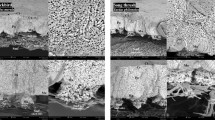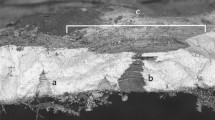Abstract
THE eggs of the coleopteran fire-fly, Luciola gorhami, found in the plains of the Punjab, have proved to be objects of rare value for the study of the problem of the origin of yolk. There are two kinds of yolk in these eggs: albuminous and fatty. The former arises directly from nucleolar extrusions of a remarkable type. At a very early stage in the growth period the nucleolus shows signs of intense activity and buds off numerous round bodies of different sizes, which are thrown out in the cytoplasm. The nucleolus continues to throw out these extrusions until the very last stage in oogenesis. At the beginning of this process the extrusions migrate towards the periphery of the egg-cytoplasm, where they grow in size, perhaps at the expense of food materials derived from the follicle cells.
This is a preview of subscription content, access via your institution
Access options
Subscribe to this journal
Receive 51 print issues and online access
$199.00 per year
only $3.90 per issue
Buy this article
- Purchase on Springer Link
- Instant access to full article PDF
Prices may be subject to local taxes which are calculated during checkout
Similar content being viewed by others
Author information
Authors and Affiliations
Rights and permissions
About this article
Cite this article
NATH, V., MEHTA, D. Origin of Yolk in the Eggs of Luciola gorhami. Nature 119, 13–14 (1927). https://doi.org/10.1038/119013c0
Issue Date:
DOI: https://doi.org/10.1038/119013c0
This article is cited by
-
Die Prozesse der Eibildung und des Eiwachstums bei Pediculiden und Mallophagen
Zeitschrift f�r Zellforschung und Mikroskopische Anatomie (1932)
Comments
By submitting a comment you agree to abide by our Terms and Community Guidelines. If you find something abusive or that does not comply with our terms or guidelines please flag it as inappropriate.



